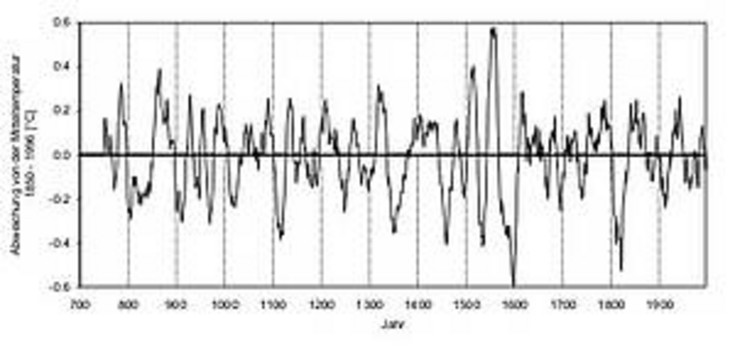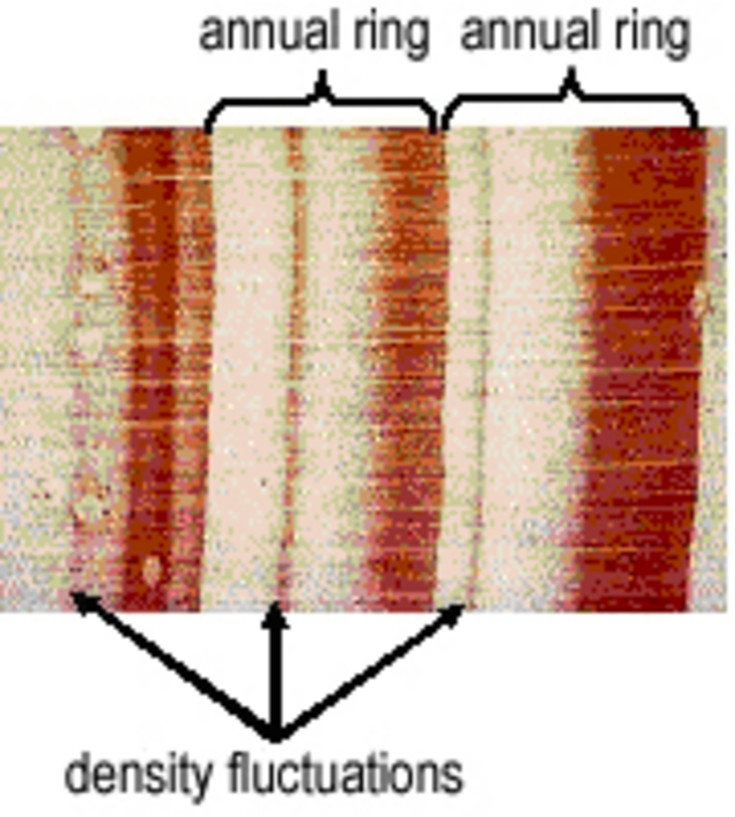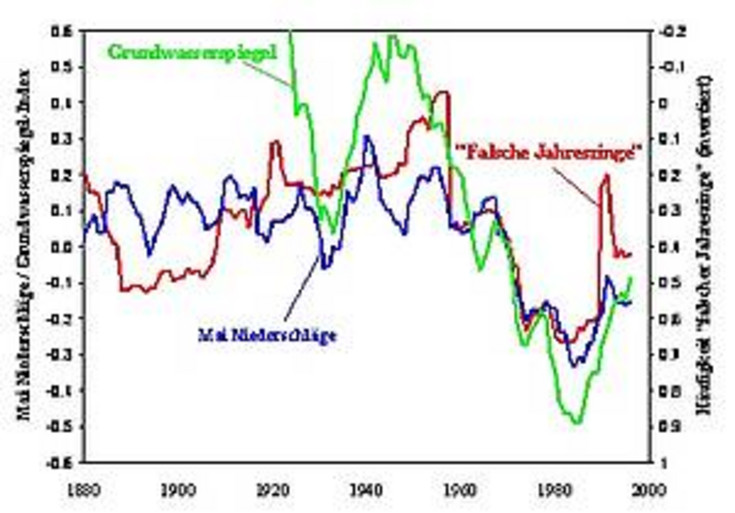VARIABILITY OF CLIMATE
VARIABILITY OF CLIMATE
Dendroclimatology is an independent research area, which reconstructs the climate with the help of dated annual ring series. Some fundamental ideas should be presented here: Reconstruction of summer temperature The formation of annual rings is influenced by several factors ranging from climate, tree age, and structure of the stock as well as to external influences such as air pollution. Tree rings getting smaller with increasing age of the tree – the so called age-trend. Therefore, this trend and all other interfering signals have to be eliminated from the data series to reconstruct the climate. Several suitable statistical methods exist to remove the unwanted “noise”. Afterwards, the climate-growth relationships can be calculated. It was shown by a simple correlation analysis that the average temperature of June and July correlates best with annual ring widths of trees from the Dachstein in Austria. The “Zentralanstalt für Meterologie und Geodynamik” offered the relevant data from Kremsmünster. Building upon this correlation a transfer function was built to reconstruct the temperature values from annual ring widths. Procedure: First the data set was divided into two parts. The data from all the uneven years between 1851 and 1995 were taken for building up a calibration function for estimating temperature values using the multiple regression method. Afterwards the function was validated by using the values from the even years of this time frame. This procedure was repeated the other way round to gain an optimal quality of the estimation of temperature values by annual ring width. The optimal regression function was chosen according to the quality of the validation results. The multiple regression analysis showed that nearly one third of the variability can be explained. Based on this relationship temperatures in June and July have been estimated back until the year 750 AD. Instead of reconstructing absolute values for the summer temperature the deviation from the average yearly temperature from 1850 until 1996 can be displayed and the sequence of cold and warm phases over the last 1250 years can be seen (Figure 1). The results of this work conform well to already published temperature reconstructions of Europe. The EU-projects „ALP-IMP“ (http://www.zamg.ac.at/ALP-IMP/) deals with climate variability in the Alps. Figure 1: Reconstruction of the deviation of summer temperature (June-July) from the average value of the years 1850 – 1996 (smoothed with moving average of 20 years) Reconstruction of precipitation What builds up stress in a Black pine? Apart from forest pests, stress in black pine occurs mostly due to dryness in spring and in summer. They frequently grow on rocky southward oriented slopes. Their growth can stop quite abruptly when water shortage in soil occurs through droughts. If water gets available again through e.g. short rainfall, trees continue to grow. These stops in growth are visible in the structure of annual rings as so called “density fluctuations” or as “false rings” (Figure 2). Figure 2: Density fluctuations in annual rings of Black pine It has been shown by means of a simple correlation analysis that the sum of rainfall from spring and summer correlates best with annual ring width of black pine. There exist small variations between the different sites but it was investigated that the rainfall within the time frame from April until August shows the highest influence on ring width. Procedure: The “Zentralanstalt für Meteorologie und Geodynamik” offered the relevant data for Vienna. Based on the found relationship between the sum of precipitation from April until August and the annual ring width, the transfer function was build by means of multiple regression. The one showing the best prediction was used for reconstructing the amount of rainfall. Figure 3 shows the reconstruction of precipitation for Vienna using Black pine trees. The growth pattern of this trees show a positive correlation with precipitation for the time frame from April until August, this means that during a dry year the Black pines grew less than during a comparably moist one. Figure 3: Reconstruction of precipitation (April- August) for Vienna using annual rings from black pine; pictured are the yearly reconstruction (thin line), the reconstruction smoothed by a moving average of 20 years and the series of measurements (Wien Hohe Warte) also smoothed (thick line) As mentioned above black pine often produces „false rings“. The wood formation is reduced by droughts during early summer and will only be reversed by rainfall. The relative frequency of these false rings is shown in Figure 4 together with other parameters. A strong relationship between precipitation in May and the level of groundwater could be shown. Therefore “false rings” provide good information about past fluctuations in groundwater level. Figure 4: Relationships between number of false rings, rainfall during May and groundwater level Conclusions With the help of dendroclimatology, i.e. the analyses of tree ring width and ring structure of Black pine, the variability of past variations of climate could be reconstructed. The main influencing parameter of the growth of Black pine trees is drought. Therefore the sum of precipitation from April to August was possible to reconstruct. Analysing the frequency of false rings, a reconstruction of the level of groundwater was possible. The Black pines of the Vienna Basin are a rare resource in Middle Europe to reconstruct past variability in precipitation.




